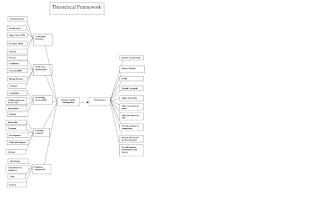Human Resource Management (HRM) merujuk kepada satu sistem dan proses dalam pengurusan sumber manusia manakala Human Capital Management (HCM) pula merujuk kepada nilai ekonomi (economic value) yang mensasarkan untuk kesan yang baik dalam suatu tempoh kehadapan.
Dalam memahami konteks dalam F.S.T.T Formula;
Contoh;
Field (F) = Human Resource
Subject (T) = Human Capital Development
Topic (T) = Training and Development Design/ Organizations Performance/
Title (T) = The Effectiveness of Online Learning as Primary on Job Training Approach/
Impact of Human Capital Management on Organizational Performance
Dalam HCM melihat dalam konteks kepentingan di masa hadapan dari segi keuntungan ekonomi dan jangka panjang (strategik).
Strategic Human Resource Management
Strategic HRM merupakan satu perkataan yang menterjemahkan penilaian dalam pengurusan sumber manusia yang mengambil kira elemen dalaman dan luaran sesuatu organisasi (firm). Terjemahan ini adalah hasil gabungan 2 model terbesar dalam proses strategy. Model tersebut adalah Industrial Organization (I/O) Model dan juga Resource - based View (RBV). I/O Model berasaskan pengurusan adalah dipengaruhi oleh faktor luar iaitu faktor persekitaran manakala RBV Model berasaskan kepada pengurusan yang dipengaruhi oleh faktor dalaman iaitu organization resources & capabilities.
Sedikit sorotan kedua-dua model dari rujukan;
There are two major models that outline the process of what strategy is and how it should be developed. The first is the industrial organization (I/O) model. This "traditional" model formed the basis of strategic management through the 1980s. The I/O model argues that the primary determinant of an organization's strategy should be the external environment in which the organization operates and that such considerations have a greater influence on performance than internal deci- sions made by managers. The I/O model assumes that the environment presents threats and opportunities to organizations, that organizations within an industry control or have equal access to resources, and that these resources are highly mobile between firms. The I/O model argues that organizations should choose to locate themselves in industries that present the greatest opportunities and learn to utilize their resources to suit the needs of the environment. The model further suggests that an organization can be most successful by offering goods and services at a lower cost than its competitors or by differentiating its products from those of competitors such that consumers are willing to pay a premium price.
The second major model is the resource-based model, sometimes referred to as the resource-based view (RBV) of the firm. The resource-based model argues that the organization's resources and capabilities, rather than environmental conditions, should be the basis for organizational decisions. Included among these resources are an organization's human resources. Organizations hence gain competitive advantage through the acquisition and value of their resources. This approach is consistent with the investment perspective of human resource management
The RBV challenges the assumptions of the I/O model. The resource-based view assumes that an organization will identify and locate key valuable resources and, over time, acquire them." Hence, under this model, resources may not be highly mobile across organizations as once they are acquired by a particular organ- ization, that organization will attempt to retain those resources that are of value." However, resources are only of value to an organization when they are costly to imitate and nonsubstitutable.
In contrasting the two approaches, the I/O model suggests that an organiza- tion's strategy is driven by external considerations; the RBV argues that strategy should be driven by internal considerations. The I/O model argues that strategy will drive resource acquisition; the RBV argues that strategy is determined by resources. Interestingly enough, research has provided support for both positions."
Strategic Human Resource Management by Jeffrey A. Mello
Human Capital Management
The concept of human capital management emphasizes the essential point that a firms human resources and subsequently its HRM system can be more than a cost to be minimized. A firms human resources have an asset value that correspond to the present value of future net cash flows that are derived from the skills, motivation, and adaptability of the firms workforce





Comments
Post a Comment